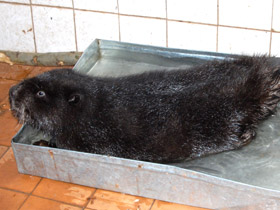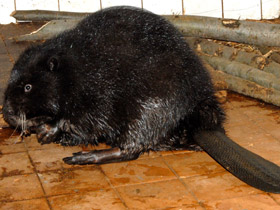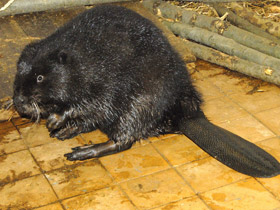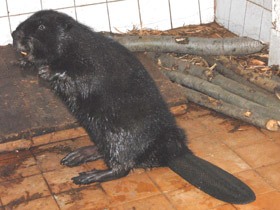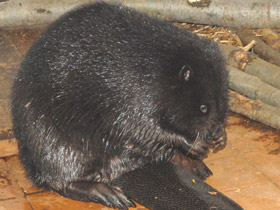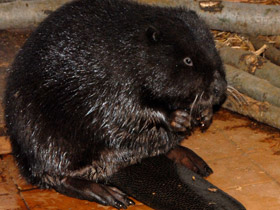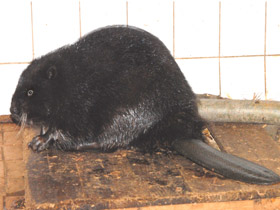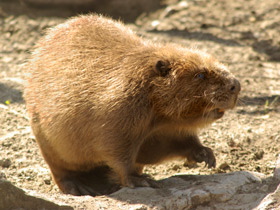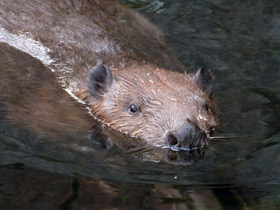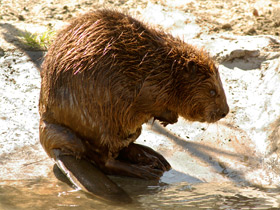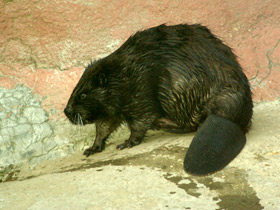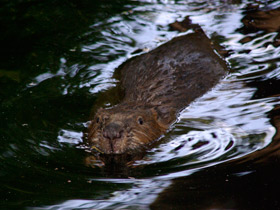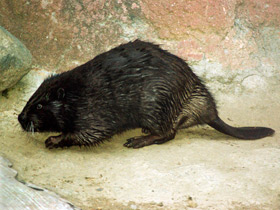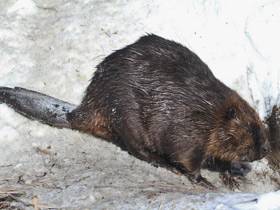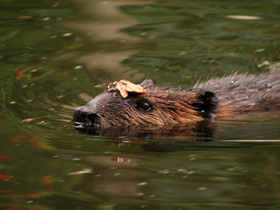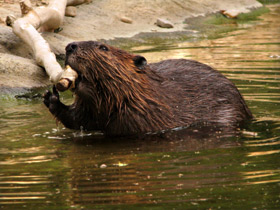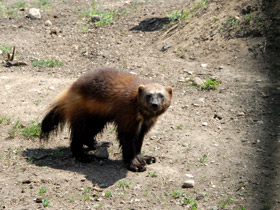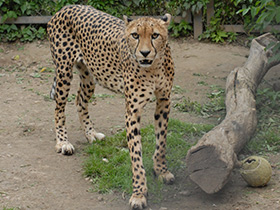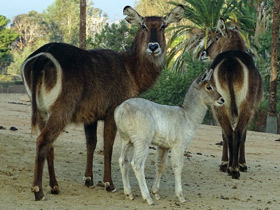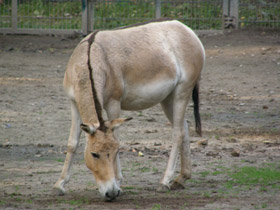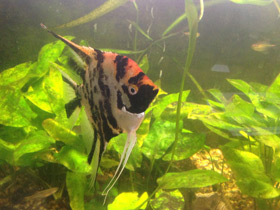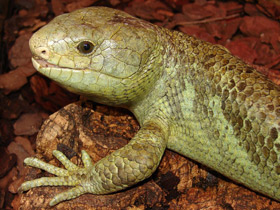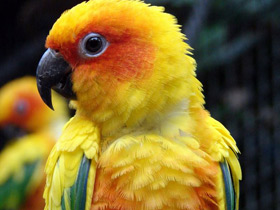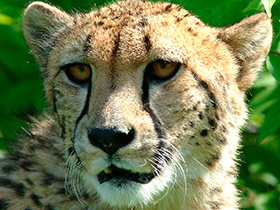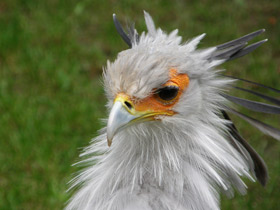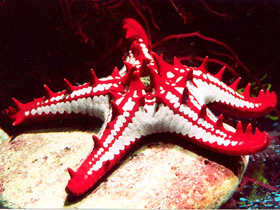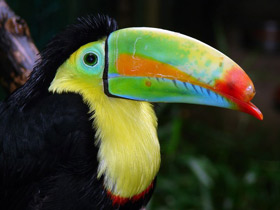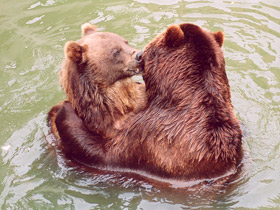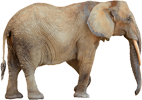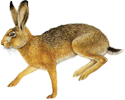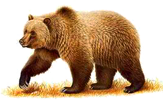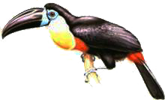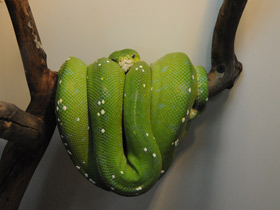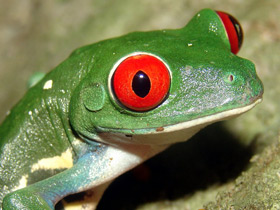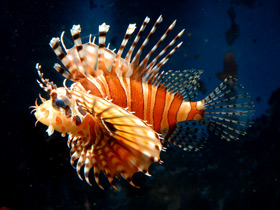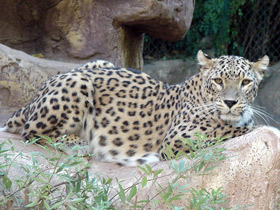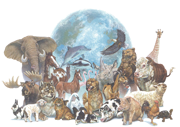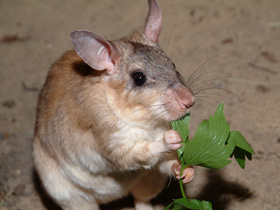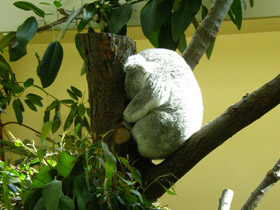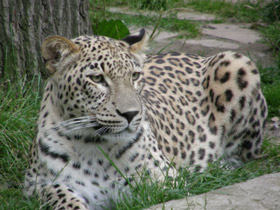The family Castoridae
The Eurasian beaver (Castor fiber) or European beaver
The North American beaver (Castor canadensis)
Castoridae is a family of rodents that cointains the two living species of beavers and their fossil relatives. A formerly diverse group, only a single genus is extant today, Castor. Two other genera of "giant beavers", Castoroides and Trogontherium, became extinct in the Late Pleistocene.
Characteristics
Castorids are medium-sized mammals, although large compared with most other rodents. They are semiaquatic, with sleek bodies and webbed hind feet, and are more agile in the water than on land. Their tails are flattened and scaly, adaptations that help them manoeuvre in the water. Castorids live in small family groups that each occupy a specific territory, based around a lodge and dam constructed from sticks and mud. They are herbivores, feeding on leaves and grasses in the summer, and woody plants such as willow in the winter. They have powerful incisors and the typical rodent dental formula:
Dentition
(1.0.1-2.3)/1.0.1.3
Evolution
The earliest castorids belong to the genus Agnotocastor, known from the late Eocene and Oligocene of North America and Asia. Other early castorids included genera such as Steneofiber, from the Oligocene and Miocene of Europe, the earliest member of the subfamily Castorinae, which contains castorids closely related to living beavers. Their teeth were not well suited to gnawing wood, suggesting this habit evolved at a later point, but they do appear adapted to semiaquatic living. Later, such early species evolved into forms such as Palaeocastor from the Miocene of Nebraska. Palaeocastor was about the size of a muskrat, and dug corkscrew-shaped burrows up to 2.5 m (8.2 ft) deep.
Giant forms evolved in the Pleistocene, including Trogontherium in Europe, and Castoroides in North America. The latter animal was as large as a black bear, yet had a brain only marginally larger than that of modern beavers. Its shape suggests it would have been a good swimmer, and it probably lived in swampy habitats.
Taxonomy
McKenna and Bell divided Castoridae into two subfamilies, Castoroidinae and Castorinae. More recent studies have recognized two additional subfamilies of basal castorids, Agnotocastorinae and Palaeocastorinae, which is followed here. Within the family, Castorinae and Castoroidinae are sister taxa; they share a more recent common ancestor with each other than with members of the other two subfamilies. Both subfamilies include semiaquatic species capable of constructing dams. The Palaeocastorinae include beavers that are interpreted as fossorial (burrowing), as are nothodipoidins and Migmacastor. The following taxonomy is based on Korth and Rybczynski, with preference given to the latter where these differ.
- Family Castoridae
- †Migmacastor;
- Subfamily †Agnotocastorinae (paraphyletic):
- Tribe †Agnotocastorini;
- †Agnotocastor;
- †Neatocastor;
- Tribe †Anchitheriomyini;
- †Anchitheriomys;
- †Propalaeocastor;
- †Oligotheriomys;
- Subfamily †Palaeocastorinae:
- †Palaeocastor;
- †Capacikala;
- †Pseudopalaeocastor;
- Tribe †Euhapsini;
- †Euhapsis;
- †Fossorcastor;
- Subfamily †Castoroidinae:
- †Priusaulax (placement in Castoroidinae questionable);
- Tribe †Nothodipoidini;
- †Eucastor;
- †Microdipoides;
- †Nothodipoides;
- Tribe †Castoroidini (paraphyletic);
- †Monosaulax;
- †Prodipoides;
- †Dipoides;
- †Castoroides;
- †Procastoroides;
- Tribe †Trogontheriini;
- †Trogontherium;
- †Boreofiber;
- †Euroxenomys;
- †Youngofiber;
- †Asiacastor;
- Subfamily Castorinae:
- †Chalicomys (also incorrectly "Palaeomys");
- †Steneofiber;
- †Zamolxifiber;
- †Romanofiber;
- †Schreuderia;
- †Sinocastor;
- †Hystricops;
- Castor - modern beavers;
- North American beaver. Castor canadensis;
- Eurasian beaver, Castor fiber;
- †Castor californicus.
The Eurasian beaver (Castor fiber) or European beaver
The Eurasian beaver (Castor fiber) or European beaver is a species of beaver that was once widespread in Eurasia, but was hunted to near-extinction for both its fur and castoreum.
These large rodents have a massive body and a flattened tail covered with large horny shields. They lead a semi-aquatic life, so the toes of their hind feet are connected by a swimming web. The claw of the second toe of the hind limbs is bifurcated, forming a kind of fork, which probably helps beavers to comb their fur and remove ectoparasites. The auricles fold longitudinally when the animal is submerged in water, and the nostrils are closed. Castoridae are distributed in Europe, Asia and North America. There is only one genus with two species in this family.
Habitat, lifestyle and habits of the river beaver
The body length of the Castor fibre reaches 1 metre and its mass is 30 kg. The beaver has a pair of anal musk glands, the oily secretion of which is known as "beaver spray" - the beaver lubricates its fur with it to protect it from getting wet. Beavers settle on the banks of slow-flowing forest rivers and lakes with abundant aquatic and riparian vegetation and make burrows or huts there. They dig burrows where there are steep banks, and huts - on low marshy banks or on shoals. Huts are large piles of brushwood bound with silt, up to 3 m high and 10 m in diameter, with a large cavity inside, the outlets of which lead into the water. In winter, the hut maintains a positive temperature and the water does not freeze. Castor fiber builds dams in water bodies with unstable water levels, which could lead to drying of the outlets of dens or huts in case of recession. They build them below the settlement from cut tree trunks, twigs and brushwood fastened with clay, silt, pieces of raft and other material. Sometimes Castor fibre also build channels through which they raft the prepared wood fodder. With their powerful incisors they not only easily gnaw branches, but also fell large trees, gnawing them at the base of the trunk (for example, a 5-7 cm diameter aspen tree can be felled by a beaver in 2 minutes). These rodents gnaw off the branches of a fallen tree and split them into parts, then eat some of the branches on the spot, while others are taken down and floated on the water to the dwelling or to the dam construction site. In autumn they prepare woody food for winter, and in summer they feed mainly on herbaceous plants (lily pad, lily-of-the-valley, iris, reed, etc.).
Social behaviour of Castor fiber
Pregnancy of Castor fiber lasts 105-107 days and 2-5 sighted and fur-covered cubs are born. After a couple of days they can swim, and at the age of 3 weeks they start to eat plant food on their own. Castor fiber usually live in families consisting of a pair of adults and their offspring of the previous and current year. It is only in the third year of life that the young reach maturity and establish their own family settlement.
Taxonomy
Castor fiber was the scientific name used by Carl Linnaeus in 1758, who described the beaver in his work Systema Naturae. Between 1792 and 1997, several Eurasian beaver zoological specimens were described and proposed as subspecies, including:
- Castor fiber albus and Castor fiber solitarius by Robert Kerr in 1792;
- Castor fiber fulvus and Castor fiber variegatus by Johann Matthäus Bechstein in 1801;
- Castor fiber galliae by Étienne Geoffroy Saint-Hilaire in 1803;
- Castor fiber flavus, Castor fiber varius and Castor fiber niger by Anselme Gaëtan Desmarest in 1822;
- Castor fiber gallicus Johann Baptist Fischer in 1829;
- Castor fiber proprius by Gustaf Johan Billberg in 1833;
- Castor fiber albicus, Castor fiber balticus and Castor fiber vistulanus by Paul Matschie in 1907;
- Castor fiber birulai and Castor fiber pohlei by Serebrennikov in 1929;
- Castor fiber tuvinicus by Lavrov in 1969;
- Castor fiber belarusicus and Castor fiber osteuropaeus by Lavrov in 1974;
- Castor fiber belorussicus and Castor fiber orientoeuropaeus by Lavrov in 1981;
- Castor fiber bielorussieus by Lavrov in 1983;
- Castor fiber introductus by Saveljev in 1997.
These descriptions were largely based on very small differences in fur colour and cranial morphology, none of which warrant a subspecific distinction. In 2005, analysis of mitochondrial DNA of Eurasian beaver samples showed that only two evolutionarily significant units exist: a western phylogroup in Western and Central Europe, and an eastern phylogroup in the region east of the Oder and Vistula rivers. The eastern phylogroup is genetically more diverse, but still at a degree below thresholds considered sufficient for subspecific differentiation.
The North American beaver (Castor canadensis)
The North American beaver (Castor canadensis) is one of two extant beaver species, along with the Eurasian beaver (Castor fiber).
Biologically similar to the Eurasian beaver and for a long time was considered its subspecies. However, its karyotype has 40 chromosomes, not 48 as in the Eurasian beaver, and they cannot interbreed.
Description and characteristics of Castor canadensis
Unlike the Eurasian beaver, the body of its Canadian counterpart is less elongated, the chest is broad, and the head is short with larger dark ear flaps and closely set convex eyes. The tail is broader (20-25 cm long and 13-15 cm wide), oval with slightly pointed end, covered with black horn flaps. Castor canadensis body length varies from 90 to 117 cm; weight reaches 32 kg. Its colouration is reddish or blackish brown. The incisors are disproportionately large - they are used to gnaw hard wood. The upper incisors are at least 20-25 mm long and 5 mm wide. Closed ear openings and nostrils, transparent membranes on the eyes are an adaptation to a semi-aquatic way of life. At the base of the tail, both males and females have large paired glands that secrete an odorous secretion.
Habitat and lifestyle
Castor canadensis is distributed in North America - in Alaska, Canada, except the extreme north; almost everywhere in the USA, except Florida, most of California and Nevada; in northern Mexico along the border with the USA. Castor canadensis is introduced into Scandinavia and from Finland, where it was introduced in 1937, has penetrated into Karelia and Leningrad Oblast. This rodent is also introduced in the Amur basin, Kamchatka and Sakhalin.
The lifestyle of Castor canadensis is very similar to that of the Eurasian beaver. Canadian beavers are just as active at night, only occasionally appearing during the day, and rarely move away from the water. They are excellent swimmers and divers, able to stay underwater for up to fifteen minutes. They live in families of up to eight individuals - a married couple and their offspring. Young beavers stay with their parents for up to two years. Beaver families are territorial and protect their territories from other beavers. Site boundaries are marked with anal gland secretion (beaver jet), which is applied to special mounds of mud and silt. In case of danger, beavers sound the alarm by slapping their tails on the water.
Where they live and what they eat Castor canadensis
Like Eurasian beavers, Castor canadensis live in huts made of brushwood covered with mud and earth. From the hut, there are two (usually two) under the water; the floor is covered with bark, grass and wood shavings. Castor canadensis inhabits burrows much less frequently than the Eurasian beaver. To regulate water level and flow velocity it builds dams on rivers from logs, branches, stones, silt and clay. Castor canadensis is characterised by great construction abilities - they hold records in building dams. For example, a dam built on the Jefferson River (in Montana) reached a length of seven hundred metres and easily supported the weight of a rider; in the late 2000s, an eight hundred and fifty metre long beaver dam was discovered in Wood Buffalo National Park (the dam took tens of years to build and is clearly visible on space images).
The intestines of Castor canadensis are longer, which allows it to eat coarser food. It mainly eats bark and cambium of soft hardwoods - willow, maple, poplar, birch, alder and aspen. It also feeds on herbaceous vegetation, aquatic and riparian. In zoos, the beaver eagerly eats a variety of vegetables.
Social behaviour
Castor canadensis are monogamous and form permanent pairs. Males and females reach sexual maturity in their third year of life. They breed once a year, in January-February in the north of the range and in late November-December in the south. Pregnancy lasts 105-107 days, and beavers are born between April and June; they are sighted, covered with reddish, brown or black fur, and are able to swim after 24 hours. They measure up to 38 cm and weigh 250-260 grams. There are 1-4 cubs in a litter. Milk feeding lasts up to ninety days, although by the second week beavers begin to eat solid food. Young beavers stay with their parents for two more years, after which they go in search of their own feeding ground. Life expectancy of beavers is 10-19 years.
Numbers and impact on habitats
Unlike the Eurasian beaver, which has been virtually exterminated, Castor canadensis has suffered less. It is not a protected species; its numbers reach 10-15 million individuals, although there were dozens of times more beavers before European colonisation of North America. Castor canadensis were intensively hunted for their fur and meat, which by the beginning of the 19th century led to a sharp decline in their range. Later, thanks to conservation and restoration measures, their numbers increased again. Castor canadensis are now considered a pest in some parts of their range, as their dams contribute to flooding and construction activities destroy riparian vegetation. But overall, Castor canadensis have a favourable impact on aquatic and riparian habitats, creating conditions for a multitude of organisms to thrive.
The beaver is Canada's national animal and is depicted on the 5-cent coin. It is also the symbol of the states of Oregon and New York and is featured on the emblems of the Massachusetts Institute of Technology and the California Institute of Technology.
Predators
Common natural predators include coyotes, wolves, and mountain lions. American black bears may also prey on beavers if the opportunity arises, often by smashing their paws into the beavers' lodges. Perhaps due to differing habitat preferences, grizzly bears were not known to hunt beavers in Denali National Park, Alaska. Less significant predators include wolverines, which may attack a rare beaver of up to adult size, and Canada lynx, bobcats, and foxes (predators of kits or very sick or injured animals, rather than full-grown beavers due to their increasingly smaller size). American alligators, which only minimally co-exist in the wild with beavers, also seldom threaten them. Both golden eagles (Aquila chrysaetos) and bald eagles (Haliaeetus leucocephalus) may on occasion prey on a beaver, most likely only small kits. Despite repeated claims, no evidence shows that North American river otters are typically predators of beavers but anecdotally may take a rare beaver kit.
Subspecies
At one time, 25 subspecies of beavers were identified in North America, with distinctions based primarily on slight morphological differences and geographical isolation at the time of discovery. However, modern techniques generally use genetics rather than morphology to distinguish between subspecies, and currently the Integrated Taxonomic Information System (which provides authoritative taxonomic information on plants, animals, fungi, and microbes of North America and the world) does not recognize any subspecies of Castor canadensis, though a definitive genetic analysis has not been performed. Such an analysis would be complicated by the fact that substantial genetic mixing of populations has occurred because of the numerous reintroduction efforts intended to help the species recover following extirpation from many regions.
The most widespread (formerly recognized) subspecies, which perhaps are now best thought of as populations with some distinct physical characteristics, are Castor canadensis acadicus (New England beaver), Castor canadensis canadensis (Canadian beaver), Castor canadensis carolinensis (Carolina beaver), and Castor canadensis missouriensis (Missouri River beaver). The Canadian beaver originally inhabited almost all of the forested area of Canada, and because of its more valued fur, was often selected for reintroductions elsewhere. The Carolina beaver is found in the southeastern United States; the Missouri River beaver, as its name suggests, is found in the Missouri River and its tributaries; and Castor canadensis acadicus is found throughout the New England area in the northeastern United States.
As food
Beaver meat is similar tasting to lean beef, but care must be taken to prevent contamination from the animal's strong castor (musk) gland. It is usually slow-cooked in a broth, and was a valuable food source to Native Americans. Early French Canadian Catholics considered beaver to be "four-legged fish" that could be eaten at Lent.
Symbolism
As one of the national symbols of Canada, the North American beaver is depicted on the Canadian nickel. This beaver was also featured on the first Canadian postage stamp, the Three Penny Beaver, which is considered the first postage stamp to show an animal instead of a head of state. It is also the state animal of Oregon and New York of the United States, and a common school emblem for engineering schools, including the California Institute of Technology, the Massachusetts Institute of Technology, and the University of Alberta as well as the mascot for Oregon State University, Babson College, and the City College of New York. A beaver is featured prominently on the stamp and seal issued to Professional Engineers and Geoscientists by APEGA. It also appears on the back on the state flag of Oregon. The beaver also appears in the coats of arms of the Hudson's Bay Company, University of Toronto, Wilfrid Laurier University, and the London School of Economics.
The beaver is also the symbol of the Royal Canadian Engineers both combat and civil.
Busy beaver is a term in theoretical computer science which refers to a terminating program of a given size that produces the most output possible.
Much of the early economy of New Netherland was based on the beaver fur trade. As such, the seal of New Netherland featured the beaver; likewise, the coats of arms of Albany, New York and New York City included the beaver.









